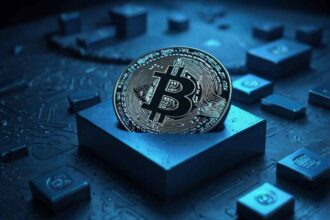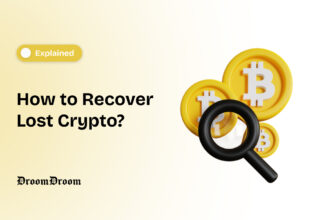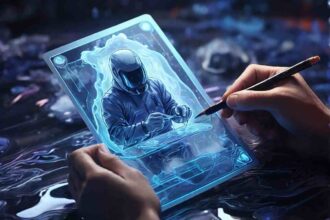The rapidly changing landscape for innovation in digital space has brought up non-fungible tokens that are creating a new approach to property ownership within the same dimension. These one-of-a-kind cryptocurrencies have been widely incorporated on other platforms such as Instagram and Facebook which is a breeding ground for a lively NFT community. This article delves into the world of NFTs and social media, where you will discover how to share your digital assets. This combination of NFTs and social media provides an emerging platform through which one can express themselves, as it is part of this new environment where individuals share their ideas about the newest type of decentralized ownership that exists online.
- What Does Having NFTs on Instagram or Facebook Mean?
- How to Post Your NFT to Instagram
- Create an NFT
- Choose an NFT Marketplace
- Connect to Instagram
- Generate Shareable Content
- Write a Caption
- Include NFT Details
- Post to Instagram
- Engage with Your Audience
- Sharing Digital Collectibles to Your Facebook Feed
- Step 1: Prepare Your Digital Collectible
- Step 2: Optional; Connect your Facebook account to a digital wallet
- Step 3: Make a new post on Facebook
- Step 4: Upload Your Digital Collectible
- Step 5: Add Relevant Details and Descriptions
- Step 6: Adjust Privacy Settings (Optional)
- Step 7: Optional tag relevant people and add hashtags
- Step 8: Post to Your Facebook Feed
- Step 9: Engage with Comments and Reactions
- Step 10: You May Also Opt for Facebook Groups or Events
- Ways to Monetize NFTs on Instagram and Facebook
- Direct Sales through Posts
- Instagram Shops
- Limited Edition Drops
- Instagram and Facebook Ads
- Collaborate with Influencers
- Host Virtual Events
- NFT Giveaways and Contests
- Exclusive Content for Supporters
- Utilize Instagram and Facebook Groups
- Educational Content
- Advantages and Disadvantages of NFTs on Meta
- Advantages of NFTs on Meta
- Broader User Base
- Integration with Social Media
- Increased Engagement
- Monetization Opportunities
- Blockchain Authenticity
- Disadvantages of NFTs on Meta
- The Future of NFTs on Meta
- Conclusion
With Instagram and Facebook advancing beyond ordinary photography and status updates, integrating NFTs adds spice to the social experience. Integration of NFTs on Instagram and Facebook enables users to show off their virtual wealth and creativity through their profile pictures that have now become online galleries.
This article is a guided tour through the relationship between blockchain technology in connection with art and social media. Let us unfold the beautiful story of NFTs on Instagram and Facebook. Learn why displaying and showcasing your virtual jewels can take different forms.
What Does Having NFTs on Instagram or Facebook Mean?
The introduction of non-fungible tokens (NFTs) into Instagram and Facebook has signified an important milestone in how people exhibit and interact with virtual collectibles in the society of social media. Unique digital assets such as digital arts, music, virtual real estate, in-game items, etc. are represented by NFTs, which are crypto-tokens in various Blockchain networks. Integration of NFTs on Instagram and Facebook enables users to show off their virtual wealth and creativity through their profile pictures that have now become online galleries.
The introduction of NFTs for Instagram – which as a platform is well noted for its visuality – represents another dimension for self-display. Users can easily post their NFT collections on feeds and stores and thus enable followers to experience such rare artworks first-hand. Apart from being a digital showcase, it also creates opportunities where creators can sell and auction products.
The combination of NFTs in Facebook enables various transactions. It allows users to show off the NFTs they purchase to other individuals, thereby stimulating interest among others by sparking discussions and generating a sense of community. Moreover, the platform’s group and event features provide a ground for NFT lovers to interact, exchange their products, and talk about new things that are emerging in the budding NFT market field. With ownership crossing beyond the physical, “ownership” of NFTs on Instagram and Facebook goes beyond just showing off personal “taste” and digital wealth; it’s part of a broader social media experience, about building community and collaborating with others—who we are in this world.
How to Post Your NFT to Instagram
You can show your digital collectibles through postings of your NFTs on Instagram and generate interest among your followers. Here’s a step-by-step guide on how to do it:
Create an NFT
Your digital collectible should also be an NFT before being posted on Instagram. It is always advisable to work with reliable blockchain technology, for instance, Ethereum while creating your token.
Choose an NFT Marketplace
Choose a suitable NFT marketplace that enables you to link and display your NFTs on your Instagram profile. Other sites incorporate features that can create a shareable URL, or image link, among others, to your digital asset.
Connect to Instagram
Sign in using Instagram. Connect your NFT collection to your Instagram profile if the selected NFT marketplace supports a direct integration option.
Generate Shareable Content
Make your NFT aesthetically pleasing. Some of these may be screenshots or parts of your digital collectibles. Stick to the posting policy of Instagram.
Write a Caption
Come up with a description or caption that contains all the required facts about your NFT project. The same would mean including the title, the edition volume, and a little summary.
Include NFT Details
Therefore, if there is any metadata attached to your NFT for example the producer, numbers, and other blockchain details then it is wise also to include such in the caption or make some aspects visual.
Post to Instagram
You can share your NFT content by adding it to your feed or story on Instagram. Include this link to the blockchain, or the NFT marketplace in your bio or the caption if possible.
Engage with Your Audience
Be sure to reply to comments, interact with your followers, and incorporate applicable hashtags to help raise awareness regarding NFT posts that you post.
Sharing Digital Collectibles to Your Facebook Feed
Posting your digital collectibles like NFTs on Facebook is also one way to share the exclusive items that you own with your friend’s list. Here’s a detailed guide on how to share digital collectibles to your Facebook feed:
Step 1: Prepare Your Digital Collectible
Make sure that you have electronic access to your collectible loaded in your gadget. This can be a photo, film, or any type of digital information.
Step 2: Optional; Connect your Facebook account to a digital wallet
Facebook itself does not support NFTs but you can post a link on it allowing users to know about their digital collectible. Since your NFT is linked with a blockchain wallet, consider including it in your post for authenticity.
Step 3: Make a new post on Facebook
Launch your mobile phone’s Facebook app or visit the Facebook website through your computer. Click in the “Create a post” tab that is positioned in the top corner near the left side of your updates window.
Step 4: Upload Your Digital Collectible
Tap on the ‘Photos and Videos’ button to put up your digital asset or collectible for sale from your smartphone. In this step, go for the file you prepared in step one.
Step 5: Add Relevant Details and Descriptions
Give details of your digital collectible in the text box. Put your artist, title, and whatever might be interesting about your collectible there. If it’s your NFT, you may want to emphasize its uniqueness and authenticity through blockchain technology. Please see here, a blockchain explorer for more details.
Step 6: Adjust Privacy Settings (Optional)
Ensure you adjust your privacy settings to establish who is able or cannot view your posts before posting them. There are options for the public, friends, and also customization.
Step 7: Optional tag relevant people and add hashtags
Add the digital asset’s name tag artist, creator, or anyone associated with the digital collateral on the digital asset’s post. Try including relevant hashtags on the post to enhance the likelihood of the post being seen by the Facebook community members.
Step 8: Post to Your Facebook Feed
After adding all the required details, click on the “post” button and share your digital collector on your Facebook wall.
Step 9: Engage with Comments and Reactions
Track any comments left on posts, reply to any queries, and interact through friend’s networks. Inquire about digital possessions and elaborate about yours.
Step 10: You May Also Opt for Facebook Groups or Events
Consider posting it to targeted Facebook groups and events that are for the subject of digital collectibles or NFT.
Interested in learning what NFT Metadata is, here is a guide for you.
Ways to Monetize NFTs on Instagram and Facebook
For one thing, monetizing NFTs on Instagram and Facebook is about displaying, selling, and interacting using such digital collectibles over these platforms. Here are several ways to monetize NFTs on these platforms:
Direct Sales through Posts
Instagram: Make use of the visual nature of Instagram as it is one of the best places to post your NFTs, which will be interesting as well. Add details of NFT like artist, edition number, and link for potential buyers in the NFT marketplace. Although the media are supposed to educate people, they confuse them.
Facebook: While direct sales may pose a challenge, you can still leverage Facebook to display and direct interested clients to other marketplaces or your business website for payments.
Instagram Shops
Use a storefront for your NFT on Instagram shops. With this capability, users can buy different products directly with the platform which makes buying more convenient for your audience.
Limited Edition Drops
Announce limited edition drops on both Instagram and Snapchat, to create a sense of exclusivity. Create suspense through the use of countdowns, teaser posts, and stories. Refer interested clients to the NFT marketplace or preferred purchase platform.
Instagram and Facebook Ads
Reach a wider audience through paid advertising on your end. Create attractive ads that feature the NFTs and have a link to the marketplace/website for buyers’ purchase.
Collaborate with Influencers
Team up with influencers who have already made a name for themselves within the NFT/art community to push your digital collectibles. They can also develop content around the NFTs you make that might reach their target market and end up selling them for you.
Host Virtual Events
Instagram Live and Facebook Live: Organize live events in which you discuss your collection and give advice to them. In these happenings, you can advertise the sale of a particular NFT or even hold a live auction.
NFT Giveaways and Contests
Increase engagement through giveaways or contests on the two platforms. You will need to make some requirements in return for posting as this helps generate buzz for potential new buyers such as users following your page, sharing, and tagging their friends.
Exclusive Content for Supporters
Offer exclusive content or backstage access on Instagram and Facebook to those who support your NFT efforts. They can do so by creating subscription-based models or making particular NFT drops available only to them.
Utilize Instagram and Facebook Groups
These platforms have groups that are specific to NFT and you should either join them or form one yourself. Make use of Twitter and interact with other artists, mentioning any NFTs that are on sale. Thus, each group serves an audience looking out for opportunities and happenings in the NFT space.
Educational Content
Educate about NFTs, blockchain technology, and digital arts by sharing relevant educational content. Doing so will make you seem like an expert and interested people might then have a closer look or even buy some of your NFTs.
Do not forget to adhere to the platforms’ rules, and always state clearly the type of NFTs you are selling. On that note always ensure that building real communities around your NFTs is done to foster trust and sustainable engagements.
Advantages and Disadvantages of NFTs on Meta
Advantages of NFTs on Meta
Broader User Base
With such a large user base, Meta can offer a potential market for the creators and sellers of NFTs. It will have a wide-reaching impact which may result in raised product awareness as well as better sales.
Integration with Social Media
Sharing of NFTs through Meta’s social media platforms including Facebook and Instagram also occurs effortlessly. This could better the overall user experience and give creators a platform to sell their NFTs.
Increased Engagement
User involvement in the Meta platform can be improved through innovation using an NFT technology that will act as a new means of digital expressive art. Sharing, commenting, and rating with NFTs helps create a social atmosphere for owners of digital artifacts.
Monetization Opportunities
The inclusion of non-fungible tokens (NFT) in the Meta platform is an opportunity for content creators and artists to create new ways of getting money. Creators can sell their digital artwork and unique content directly to their followers via this medium.
Blockchain Authenticity
With Meta employing blockchain as a foundation of NFTs, the credibility and proprietorship remain intact with digital commodities. This will minimize the chances of plagiarism and copying of digital content unlawfully.
Disadvantages of NFTs on Meta
Centralization Concerns
Many blockchains that are important for Meta are the opposite – they involve decentralization. However, some users might be reluctant towards Meta as a central power in the marketplace of NFTs due to security issues.
Privacy Issues
User privacy scandals have been associated with Meta in the recent past. People could have worries about to what extent a user’s information and even NFT deals in the Meta universe are held to account.
Platform Dependence
If one relies on meta platforms for NFTs, then one agrees that whatever policy is imposed or updated; one will be bound by it. As a result, if Meta changed its mind about supporting NFTs and instituted some new rules, it might potentially influence the NFT ecosystem in these platforms.
User Understanding
Blockchain and NFTs are very confusing for some users. Meta should design easy-to-use interfaces and supply learning materials to enable users to find their way into the NFT domain.
As they move along this path toward integrating NFTs, it is important to keep abreast of any new developments. These factors, which include addressing the challenges and improving user experience will determine their success and the level of acceptance they will attract in Meta.
For newbies here is a deep dive into Metaverse and NFTs just for you.
The Future of NFTs on Meta
It is expected to be characterized by the blending of digital tokens with social media platforms as NFT is to become more integrated into Meta Platforms. The possibility of having an active NFT environment within the Meta-universe with Meta’s venture into the exploration of such technology is high. Such a large number of users on the likes of Facebook or Instagram means that content creators and artists can have their work appreciated by the whole world.
Users can create, share, and even sell their digital collectibles directly through Meta’s popular social media network due to the seamless interconnection between NFTs and Meta’s social media architecture. Nevertheless, there are some hurdles like those about centralization, users’ data security, and environment issues related to blockchain systems required to be tackled wisely.
The future is likely to provide more interactive, engaging, meaningful, distinctive, and personalized digital settings that could be used for social interactions as well as self-expression in the context of digital goods such as NFTs. The following events will probably lead to a revolution of the metage world in terms of the creative industry and digital ownership.
Interested in the mind-blowing evolution of the Metaverse gaming industry.
Conclusion
This integration brings fresh prospects into a domain where it becomes possible to use digital content as an expression of one’s identity, or personal property. The union between blockchain technology and social media makes it a lively ground where users can put forward their exclusive digital assets. Instagram and Facebook NFTs will help to make users reshape themselves as artists and create communities that combine all forms of creativity and digital property to form a new metaverse.




















